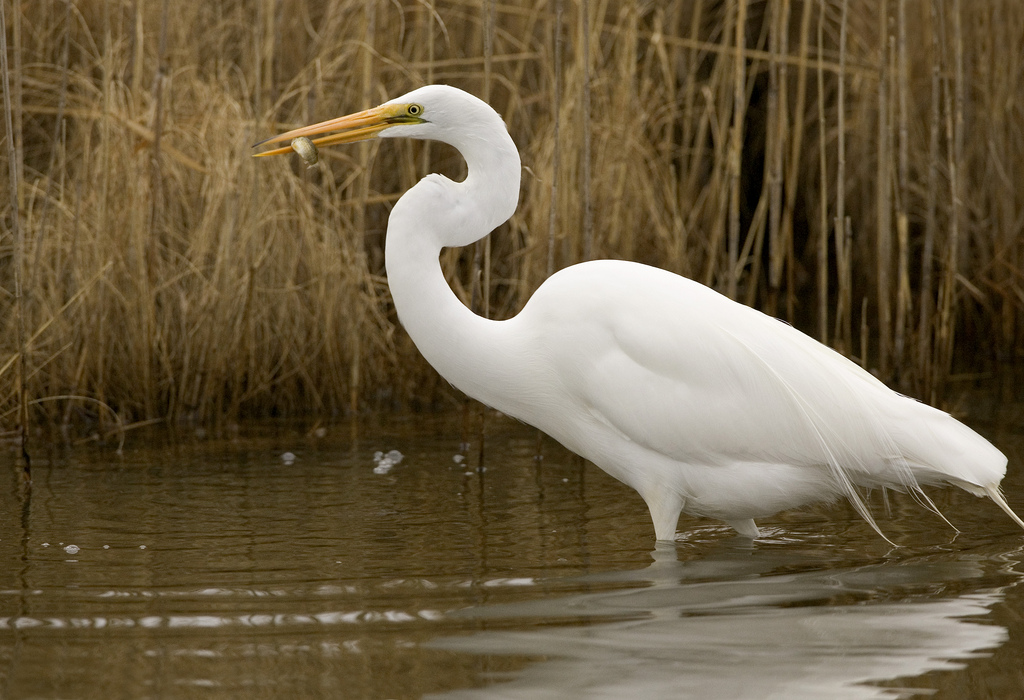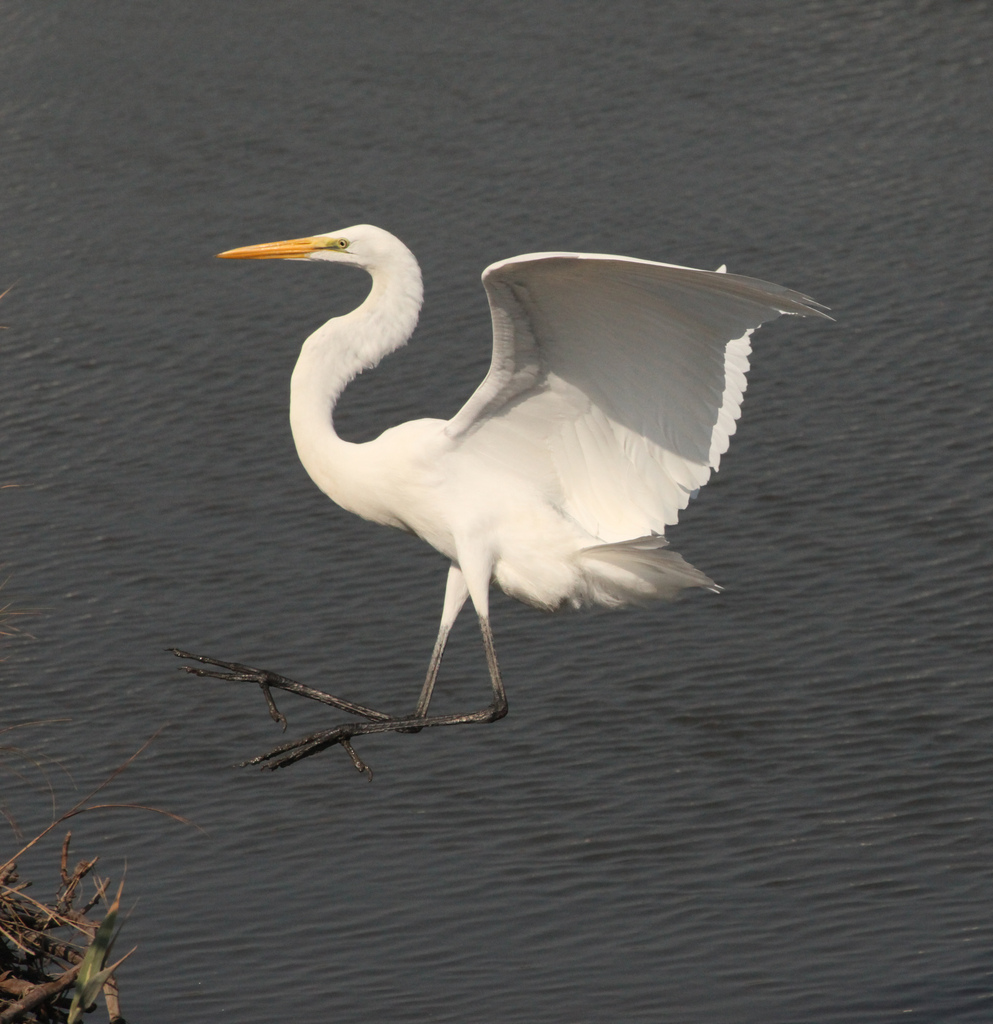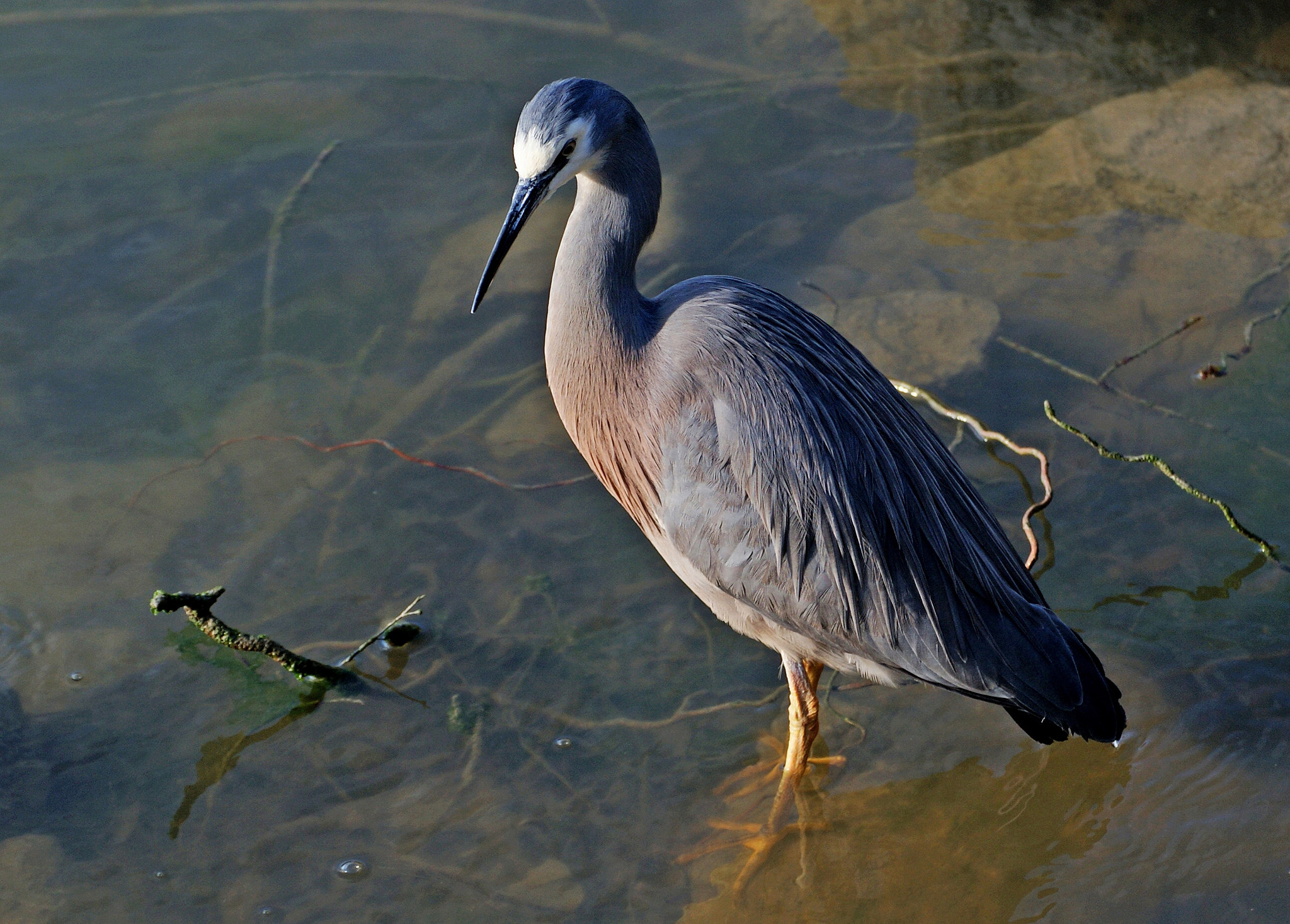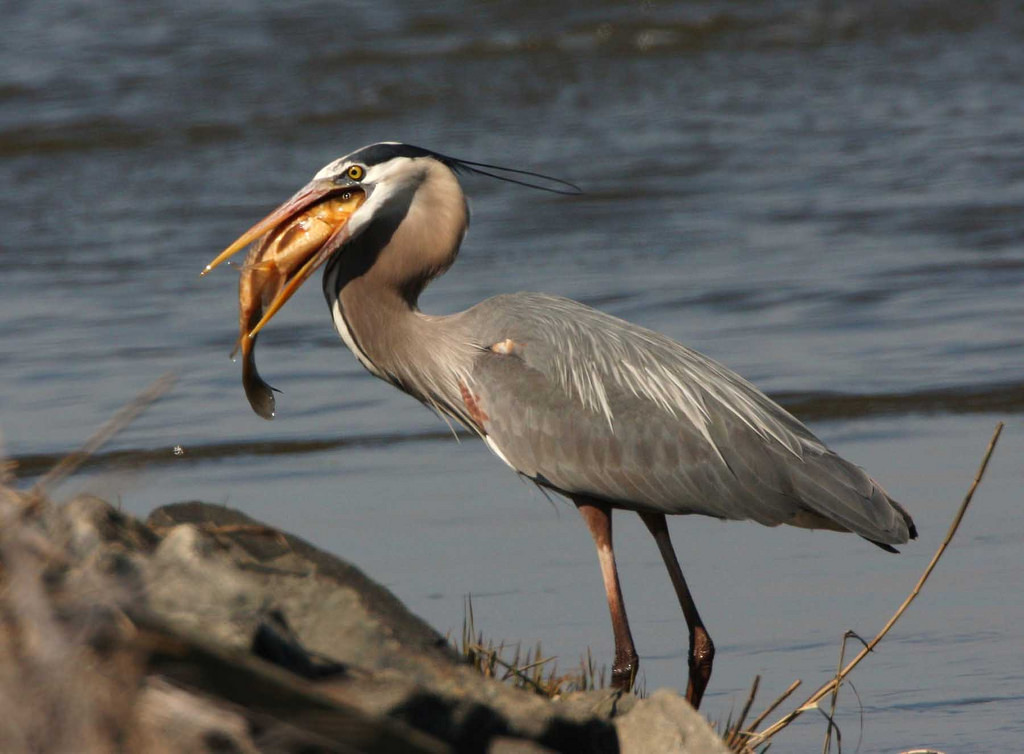Several elegant, long-necked, wading birds known as herons and egrets may be observed in Ebenezer throughout the year. The largest is the Great Blue Heron. It stands nearly five feet tall and sports beautiful slate gray-blue feathers streaked with black through its eye and on the leading edge of it wings. Other herons include the Little Blue that looks like a smaller version of the Great Blue without the black streaks (two feet tall) and the Tri-Color that is between the Great Blue and Little Blue in size. The Tri-Color is mostly slate-blue with a white chest and belly and a purplish red neck. The Little Green Heron is the smallest of this group of birds and is greenish in the sun with a reddish neck streaked with white. When roosting, the Little Green keeps its head and neck tucked and the only time you really see that it has a longish neck is when it takes off to fly. After taking off it tucks its neck again.
Two other herons you may be lucky enough to see are the Yellow-crowned and Black-crowned Night Herons. These birds are stockier than the other herons and about the same height as a Snowy Egret at two feet. They are grayish and as their names imply their distinguishing characteristics are their yellow and black crowns. The young of both look very similar, making it difficult to tell them apart. As their name indicates they tend to feed at dusk and dawn on fish, crustaceans, aquatic insects and frogs. Their forcefully delivered calls sound like wok, wok, wok.
The largest of the egrets is the Great White Egret which has, as you may have guessed, all white feathers. All egrets are solid white except for one very rare visitor, the Reddish Egret which is slate blue with reddish neck feathers. Egrets have yellow or black beaks and yellow or black legs in various combinations. The sizes of the egrets are typically good enough to identify them as a Great or a Snowy. The Great Egret nearly the size of a Great Blue Heron and the Snowy Egret about half its size. Another egret, the Cattle, a naturalized egret, is typically not seen in the creek but rather alongside roadways and in fields you may spot on your way to Ebenezer.
The long necks of the herons and egrets elevate their heads sufficiently enough to gain a distinct advantage when spotting fish and aquatic insects and frogs in the water. The curves in their necks give them a powerful strike as they thrust their beaks to pierce or capture their prey. The calls of herons and egrets are not melodious nor distinguishable. They sound grumpy, especially when disturbed, with throaty, raspy harrumphs of displeasure. In the spring when mating season is in full swing all herons and egrets sport stylishly long wispy white feathers from their heads and chests indicating they are ready for the “season of love”. Unfortunately the long wispy mating plumage was nearly their demise. Back in the early 1900’s fashionable lady’s hats were adorned with these feathers and hunters eager to earn a good living nearly wiped out all herons and egrets for this industry. Today herons and egrets enjoy full protection from such threats under the Migratory Bird Treaty Act of 1918.
Cathy J. Sakas
The Coastal Naturalist




